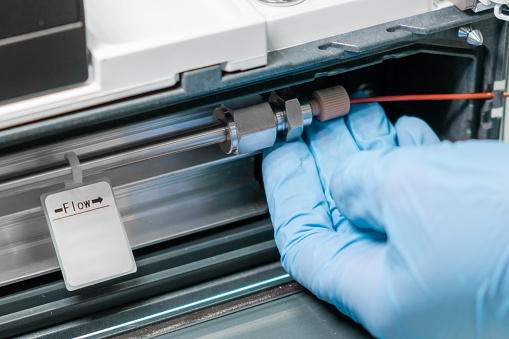How to Choose an HPLC Column Suppliers

The right HPLC column supplier is important for your analysis. There are several criteria to consider when selecting the best column for your specific analysis. Consider the resolution and lifetime of the column. Ideally, you want a resolution of 1.5 or higher. You should also consider the reproducibility of the column. This will extend the life of the column.
Read the specifications sheet carefully. There are some columns that may need to be used at higher rates than the recommended maximum flow rate. If you intend to use organic solvents, for example, you may want to consider using a slow ramping rate to increase or decrease the concentration. Another factor to consider is the loading capacity.
The size of the particles used in HPLC columns has a significant impact on the overall efficiency of the system. Smaller particle sizes decrease runtimes and increase selectivity. However, this also increases backpressure. The smaller the particle size, the more backpressure there is in the column. As a result, smaller particles increase the pressure and reduce the number of interstitial voids, which helps the compound push through. Read this article for more details!
HPLC columns come in many different sizes, ranging from capillary to process scale. The internal diameter (ID) of the column determines the sample-loading capacity and the separation sensitivity. Smaller column IDs offer greater detection and separation sensitivity. Analytical HPLC columns were originally packed with irregularly-shaped silica particles, but now most HPLC columns are packed with spherical porous silica particles. Higher porosity means lower backpressure, which improves efficiency. Polymeric resins have high cross-linking properties and are especially useful in applications where silica packing is not an option. To know more about chromatography, visit this website at https://www.youtube.com/watch?v=PvHvx7k7UPU.
Despite the high degree of competition in the HPLC market, there are only five to ten major companies that consistently dominate the market. Nearly half of the liquid chromatography industry is comprised of smaller, fragmented manufacturers. Only a handful of companies introduced monolith column technologies. A more diversified market would lead to more innovation and better products for the market.
The Gazelle HPLC column, manufactured by Orochem Technologies, is known for its high sensitivity and reproducibility in less time. Its proprietary manufacturing process results in a pore size distribution with narrow particle sizes. Its hydrophobic spherical surface also provides stability in a wide pH range.
Another HPLC column supplier is Hawach Scientific, which supplies empty or prepacked columns. The company also offers a full range of HPLC materials. Its HPLC columns have high efficiency, excellent peaks, and low pressure. They are equivalent to Waters and are able to deliver the highest separation performance.
In recent years, interest in monolithic columns has increased substantially, especially in the pharmaceutical and biochemical industries. In the near future, the use of HPLC monoliths may result in improved pharmaceutical products, advanced forensic testing in criminal trials, and improved environmental monitoring. These developments will likely increase consumer awareness of the quality of healthcare provided. Make sure to view here!
